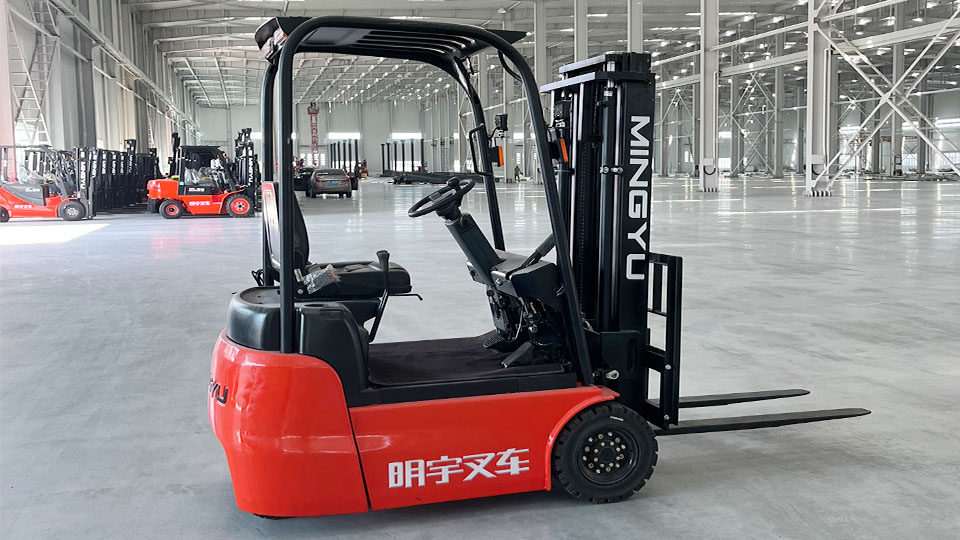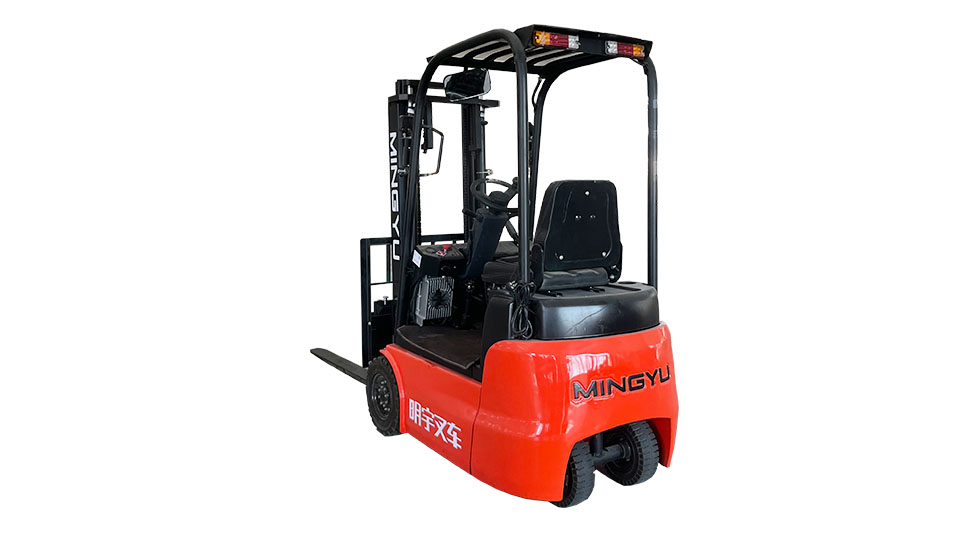
Electric forklifts are the workhorses of countless indoor and some outdoor operations, prized for their quiet efficiency and zero tailpipe emissions. At the heart of their power lies the lead-acid battery, a robust yet maintenance-sensitive component. One of the most critical maintenance tasks for these batteries is proper watering. Adding water at the right time, and in the right way, is paramount for maximizing battery lifespan, ensuring optimal performance, and preventing costly damage and safety hazards. This technical article will delve into the lithium battery battery forklift new electric forklifts for sale processes within a lead-acid forklift battery, explain why watering is necessary, and, most importantly, detail the precise timing and procedures for adding water to ensure the longevity and reliability of this vital power source.
Understanding the Electrochemical Heart of a Lead-Acid Battery:
To understand the necessity and timing of battery watering, it's crucial to grasp the fundamental electrochemical reactions that occur during charge and discharge cycles. A lead-acid battery consists of positive plates (lead dioxide, PbO₂), negative plates (spongy lead, Pb), and an electrolyte solution of sulfuric acid (H₂SO₄) and water (H₂O).
Discharge: When the forklift is in use and drawing power, the battery discharges. During this process:
Sulfuric acid reacts chemically with the active materials on both the positive and negative plates.
This reaction produces lead sulfate (PbSO₄) on both plates and releases electrons, generating electrical current.
Importantly, water is also a byproduct of this reaction, albeit in a relatively small quantity compared to the water lost through other mechanisms.
The concentration of sulfuric acid in the electrolyte decreases as it is consumed in the reaction.

Charge: When the battery is recharged, the reverse process occurs:
Electrical current is forced back into the battery, reversing the chemical reaction.
The lead sulfate on the plates is converted back to lead dioxide (positive plate) and spongy lead (negative plate).
Sulfuric acid is regenerated, increasing its concentration in the electrolyte.
A crucial side reaction during charging, especially towards the end of the charge cycle (gassing), involves the electrolysis of water (H₂O) into hydrogen (H₂) and oxygen (O₂) gases. This is the primary mechanism by which water is lost from the battery.
Why Battery Watering is Essential:
The loss of water from the electrolyte due to gassing during charging is the primary reason why regular battery watering is necessary. Maintaining the correct electrolyte level is critical for several reasons:
Ensuring Proper Chemical Reactions: The electrolyte acts as the medium for the chemical reactions that produce and store electrical energy. If the electrolyte level drops too low, parts of the plates will become exposed to air. This can lead to:
Sulfation: The exposed lead sulfate can harden and become difficult to convert back to active materials during charging, reducing the battery's capacity and lifespan.
Oxidation and Corrosion: Exposure to air can cause oxidation and corrosion of the battery plates and internal components, leading to premature failure.
Maintaining Electrolyte Concentration: The correct ratio of sulfuric acid to water in the electrolyte is crucial for optimal battery performance. Water loss increases the concentration of sulfuric acid. Excessively high acid concentration can:
Damage the Plates: It can accelerate corrosion and degradation of the lead plates and separators.
Reduce Battery Capacity: It can hinder the battery forklift new electric forklifts for sale reactions, leading to reduced energy storage and delivery.
Preventing Thermal Runaway: Low electrolyte levels can increase the internal resistance of the battery, leading to increased heat generation during charging and discharging. Excessive heat can damage the battery components, potentially leading to thermal runaway, a dangerous condition that can cause battery failure, fire, or explosion.
Maximizing Battery Lifespan: Consistent and proper watering is a fundamental aspect of battery maintenance that directly impacts the battery's longevity. Neglecting watering will significantly shorten the battery's usable life, resulting in premature replacement costs.
Ensuring Optimal Performance: Batteries with the correct electrolyte level will deliver their rated capacity and voltage, ensuring the forklift operates efficiently and can handle its intended workload.
The Golden Rule: Water After Charging, Never Before
The most critical principle to understand regarding battery watering is the timing: always add water after the battery has completed a full charge cycle. Adding water before or during charging can have detrimental effects:
Electrolyte Expansion During Charging: During the charging process, the electrolyte level naturally rises as the sulfuric acid is regenerated and the solution becomes more concentrated. Adding water before charging will cause the electrolyte level to become excessively high as the battery charges.
Overflow and Acid Spillage: An overfilled battery will likely spill electrolyte during the gassing phase of charging. Sulfuric acid is highly corrosive and can damage the battery case, the forklift itself, the floor, and pose a serious safety hazard to personnel.
Diluted Electrolyte During Charging: Adding water before charging dilutes the electrolyte solution before the sulfuric acid has been fully regenerated. This can hinder the charging process and prevent the battery from reaching its full charge capacity.

Determining When Watering is Necessary: The Key Indicators:
Instead of adhering to a rigid schedule (e.g., watering every week), the frequency of watering depends on several factors, including the battery's age, usage intensity, ambient temperature, and charging practices. The best approach is to monitor the electrolyte level regularly and water only when it falls below the recommended level. Here are the key indicators to watch for:
Visible Plate Exposure: The most direct indication that watering is needed is when the tops of the battery plates are visible above the electrolyte level. The electrolyte should always cover the plates completely. If the plates are exposed, sulfation and corrosion are already occurring.
Low Electrolyte Level Indicators: Many forklift batteries have built-in low electrolyte level indicators. These can be simple visual indicators (e.g., a line on the cell casing) or more sophisticated float-based systems. Always adhere to the manufacturer's recommendations for these indicators.
Regular Monitoring: Implement a routine inspection schedule (e.g., weekly or after a certain number of charge cycles) to check the electrolyte levels in all cells. This proactive approach helps identify low levels before they become critical.
Battery Age and Usage: Older batteries and those subjected to heavy use and frequent deep discharges tend to lose water more quickly due to increased gassing during charging. These batteries will require more frequent monitoring and watering.
High Ambient Temperatures: Higher operating temperatures can accelerate water evaporation from the electrolyte, necessitating more frequent watering.
Charging Practices: Overcharging the battery can lead to excessive gassing and increased water loss. Ensure that the charger is functioning correctly and is set to the appropriate charging parameters for the battery.
The Correct Procedure for Adding Water:
Once it's determined that watering is necessary after a full charge cycle, follow these steps carefully:
Safety First: Wear appropriate personal protective equipment (PPE), including safety glasses, acid-resistant gloves, and an apron, to protect against potential electrolyte spills. Ensure the forklift is turned off and the battery charger is disconnected. The battery area should be well-ventilated to dissipate any hydrogen gas that may be present.
Inspect Electrolyte Levels: Carefully remove the vent caps from each cell. Use a battery hydrometer or a visual inspection (with a flashlight if needed) to check the electrolyte level in each cell.
Use Distilled or Deionized Water Only: Never use tap water or mineral water. These contain impurities that can contaminate the electrolyte and damage the battery plates, reducing its performance and lifespan. Use only distilled or deionized water, which is free of harmful minerals and contaminants.
Fill to the Correct Level: Add distilled or deionized water to each cell until the electrolyte level reaches the bottom of the vent well or the indicator line specified by the battery manufacturer. Avoid overfilling. The plates should be completely submerged, but there should be some space below the top of the cell to allow for electrolyte expansion during the next charge cycle.
Replace Vent Caps: Securely replace all vent caps.
Clean the Battery Top: If any electrolyte spillage has occurred, clean the top of the battery and the surrounding area with a solution of baking soda and water to neutralize the acid. Rinse with clean water and dry thoroughly.
Record the Watering: Maintain a log of when and how much water was added to each battery. This helps track water consumption patterns and identify potential issues with individual cells or charging practices.
Consequences of Improper Watering:
Neglecting or improperly performing small electric forklift can lead to severe consequences:
Reduced Battery Lifespan: The most common outcome is a significantly shortened battery lifespan, requiring premature and costly replacement.
Decreased Performance: Under-watered batteries will have reduced capacity and voltage, leading to decreased forklift performance and shorter operating times between charges.
Battery Damage: Sulfation, corrosion, and overheating caused by improper watering can permanently damage the battery cells.
Safety Hazards: Acid spills due to overfilling pose a serious risk of burns and damage to equipment and infrastructure. Hydrogen gas buildup in under-ventilated areas during charging can create an explosion hazard.
Increased Operating Costs: Premature battery replacement, increased energy consumption due to inefficient batteries, and potential damage to the forklift all contribute to higher operating costs.
Conclusion:
Proper battery watering is not a trivial maintenance task; it is the lifeblood of your electric forklift's power source. Understanding the electrochemical processes, adhering to the crucial rule of watering after charging, diligently monitoring electrolyte levels, and following the correct watering procedure with distilled or deionized water are essential for maximizing battery lifespan, ensuring optimal forklift performance, and maintaining a safe operating environment. By prioritizing this fundamental aspect of battery maintenance, you can significantly reduce operational costs, minimize downtime, and ensure the reliable power that keeps your electric forklifts running efficiently for years to come.
Name: selena
Mobile:+86-13176910558
Tel:+86-0535-2090977
Whatsapp:8613181602336
Email:vip@mingyuforklift.com
Add:Xiaqiu Town, Laizhou, Yantai City, Shandong Province, China